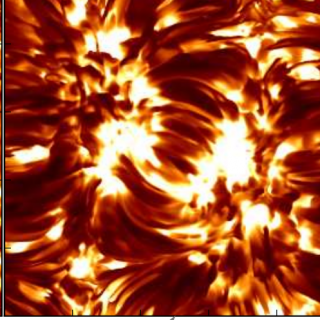Bibcode
Asensio Ramos, A.; de la Cruz Rodríguez, J.; Martínez González, M. J.; Socas-Navarro, H.
Bibliographical reference
Astronomy and Astrophysics, Volume 599, id.A133, 10 pp.
Advertised on:
3
2017
Journal
Citations
36
Refereed citations
36
Description
Context. Solar chromospheric fibrils, as observed in the core of strong
chromospheric spectral lines, extend from photospheric field
concentrations suggesting that they trace magnetic field lines. These
images have been historically used as proxies of magnetic fields for
many purposes. Aims: Use statistical analysis to test whether the
association between fibrils and magnetic field lines is justified. Methods: We use a Bayesian hierarchical model to analyze several tens
of thousands of pixels in spectro-polarimetric chromospheric images of
penumbrae and chromospheric fibrils. We compare the alignment between
the field azimuth inferred from the linear polarization signals through
the transverse Zeeman effect and the direction of the fibrils in the
image. Results: We conclude that, in the analyzed fields of view,
fibrils are often well aligned with the magnetic field azimuth. Despite
this alignment, the analysis also shows that there is a non-negligible
dispersion. In penumbral filaments, we find a dispersion with a standard
deviation of 16°, while this dispersion goes up to 34° in
less magnetized regions.
Related projects

Solar and Stellar Magnetism
Magnetic fields are at the base of star formation and stellar structure and evolution. When stars are born, magnetic fields brake the rotation during the collapse of the mollecular cloud. In the end of the life of a star, magnetic fields can play a key role in the form of the strong winds that lead to the last stages of stellar evolution. During
Tobías
Felipe García

Magnetism, Polarization and Radiative Transfer in Astrophysics
Magnetic fields pervade all astrophysical plasmas and govern most of the variability in the Universe at intermediate time scales. They are present in stars across the whole Hertzsprung-Russell diagram, in galaxies, and even perhaps in the intergalactic medium. Polarized light provides the most reliable source of information at our disposal for the
Ernest
Alsina Ballester